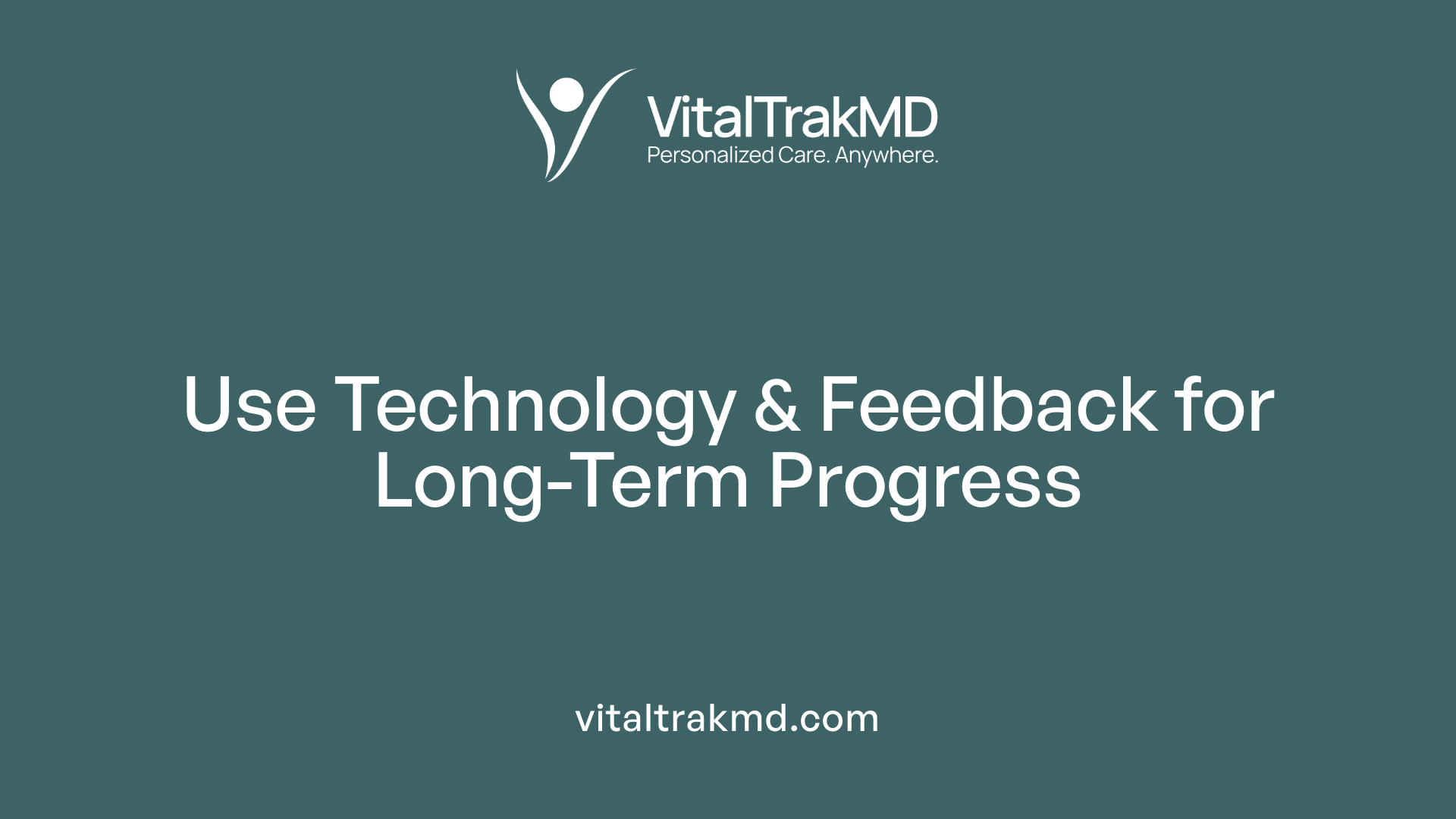Tracking Wellness Progress Over Time with Hybrid Health Programs

The Evolution of Hybrid Wellness Initiatives
In recent years, hybrid health programs have emerged as a comprehensive approach to maintaining and improving employee and patient well-being. These programs combine digital tools with in-person activities to create flexible, accessible, and personalized wellness journeys. By integrating technology and human interaction, hybrid initiatives offer a promising avenue for tracking wellness progress over time, enabling organizations and individuals to achieve sustained health outcomes.
Understanding the Impact of Hybrid Health Programs on Organizational and Employee Wellness

How do hybrid health programs impact organizational wellness and employee well-being?
Hybrid health programs combine the benefits of digital and in-person wellness activities, offering increased accessibility and flexibility. This approach encourages higher levels of engagement, which are vital for fostering long-term healthy behaviors among employees.
These programs are particularly effective in addressing challenges unique to hybrid work environments, such as digital fatigue and social isolation. By providing tailored mental health support, virtual social activities, and inclusive wellness options, organizations can create a supportive environment that promotes overall well-being.
Leadership commitment plays a critical role in the success of these initiatives. When organizational culture emphasizes health and wellness, employees feel more comfortable engaging with programs, fostering trust and psychological safety.
Using metrics like participation rates, stress reduction, health improvements, and healthcare cost savings, organizations can measure the effectiveness of their hybrid wellness programs. Successful programs often lead to decreased absenteeism, increased productivity, and higher job satisfaction.
Ultimately, integrating hybrid health programs into the workplace creates a healthier, more motivated workforce, supporting both individual well-being and organizational success.
Leveraging Technology and Wearables for Continuous Wellness Monitoring

What role do technology, wearables, and digital tools play in measuring and improving wellness in hybrid health settings?
Technology, wearables, and digital tools have become essential in modern hybrid wellness programs. They enable the continuous, real-time collection of data related to physical, mental, and emotional health through advanced sensors embedded in devices like smartwatches, fitness trackers, and medical-grade patches. AI-enabled sensors enhance the accuracy of data such as heart rate, sleep quality, activity levels, and biometric markers, supporting early detection of health issues.
These tools facilitate personalized insights by analyzing vast amounts of health data. They recognize patterns, forecast potential risks, and recommend tailored interventions, making wellness management more proactive and precise. Digital health innovations also support remote diagnostics, telehealth consultations, and digital diagnostics, broadening access to healthcare services while reducing the need for in-person visits.
Emerging advancements include the development of digital twins, robotic assistive devices, and customizable implants, which expand the possibilities for diagnosis, treatment planning, and ongoing health monitoring. Despite some challenges in ensuring data quality, privacy, and equitable access, these technologies are transforming healthcare into a more efficient, personalized, and preventative system.
How can digital tools be used to track wellness progress over time within hybrid programs?
Digital tools like health apps, connected wearable devices, and online dashboards facilitate ongoing monitoring of wellness metrics such as activity, sleep, and mental health. These platforms collect consistent data, which can be reviewed through features like health assessments, lifestyle quizzes, and engagement surveys.
Regular data collection allows organizations and individuals to track health trends and participation levels over weeks and months. Electronic health records integration further enriches this data, providing a comprehensive view of wellness progress.
Personalized goal setting, remote coaching, and timely feedback motivate sustained engagement. For instance, wearable devices can prompt movement after periods of inactivity, and apps can provide mental health exercises based on mood assessments.
Data analysis and audits ensure the accuracy and quality of information, while feedback loops optimize program effectiveness. Over time, detailed trends and insights support evidence-based adjustments to wellness initiatives, fostering continuous improvement and sustained health benefits.
Effective Methods and Strategies for Tracking Wellness Progress

What are effective methods and strategies for tracking wellness progress over time within hybrid health programs?
Tracking wellness progress in hybrid programs requires a combination of technological tools, structured check-ins, goal setting, feedback, and continuous assessment.
Technology plays a central role. Devices like remote health monitors, wearable fitness trackers, and smart health apps collect real-time data on vital signs, activity levels, sleep patterns, and symptom changes. Platforms such as Thryve or Truworth Wellness can integrate data from various sources and connect seamlessly with electronic health records. This integration allows healthcare providers and employers to monitor health outcomes, track adherence to wellness plans, and identify early signs of issues remotely.
Regular structured check-ins—whether through virtual consultations, digital surveys, or in-app questionnaires—help evaluate ongoing progress. These check-ins can be scheduled weekly or bi-weekly, providing consistent opportunities for users to share updates and discuss concerns.
Setting personalized, measurable goals is another vital strategy. Goals could involve increasing daily steps, improving sleep quality, or managing specific health conditions. Clear goals help motivate participants and give tangible benchmarks for progress.
Feedback loops—automatic notifications, coaching messages, and progress reports—keep participants engaged. These feedback systems reinforce positive behaviors and inform users when adjustments are necessary.
Ongoing assessment using participation metrics, health outcome data, and satisfaction surveys enables organizations to evaluate the effectiveness of their programs. Regular data review and quality checks, such as audits, ensure the collected information supports decision-making and continuous improvement.
In summary, blending advanced technology, structured interactions, personalized goal setting, timely feedback, and regular assessments creates a comprehensive approach to tracking wellness. This integrated method supports long-term health improvements and helps maintain motivation in hybrid health initiatives.
Designing and Implementing Hybrid Wellness Features and Components

What components and features are essential for hybrid health initiatives to effectively support progress tracking?
Successful hybrid wellness programs rely on a combination of digital and in-person tools that work together to support ongoing health and well-being. Central to these efforts are integrated digital platforms that connect wearable devices, virtual health assessments, and data analytics. These systems enable continuous, comprehensive progress tracking regardless of employees' physical locations.
Key features include an intuitive user interface that makes tracking simple and accessible. Personal goal setting and tailored content motivate participants to stay engaged and accountable. Real-time progress reports, visual dashboards, and secure data sharing facilitate transparency and trust—employees can view their milestones and healthcare providers can monitor improvements safely.
A broad range of offerings enhances program effectiveness. On-demand workout videos, live virtual classes, mental health resources, habit trackers, and gamified challenges create a holistic experience that appeals across diverse populations. Incorporating feedback mechanisms helps refine the program based on participant input.
Culturally inclusive content ensures accessibility and relevance for all employees, fostering a sense of belonging. Regular manager training on program utilization and support strategies encourages leadership engagement, which is crucial for fostering an environment of accountability.
Ultimately, blending stable technological tools with thoughtful communication and leadership support ensures that hybrid health programs are personalized, adaptable, and capable of driving sustained improvement in employee well-being. Continuous data collection and strategic adjustments help organizations meet evolving health needs and improve overall program success.
Managing Long-Term Behavior Change Through Hybrid Programs
How do behavioral theories inform long-term health behavior change in hybrid programs?
Effective long-term management of health behaviors in hybrid programs draws heavily on behavioral science. Theories such as social cognitive theory emphasize the importance of self-efficacy—individual belief in their ability to succeed—which directly influences motivation and persistence. Similarly, the Wahls Behavior Change Model highlights the need for personalized, goal-oriented strategies that incorporate environmental and social support.
Using these frameworks, programs can be designed to foster an individual’s confidence and equip them with skills to overcome barriers. This approach supports sustained engagement and helps translate short-term wins into lasting lifestyle modifications.
In what ways can customization improve adherence and outcomes?
Personalization is crucial in managing health behavior change over the long haul. Hybrid programs allow for tailored interventions based on detailed assessments, preferences, and social contexts. Digital tools like health risk assessments, wearable device data, and lifestyle quizzes enable real-time feedback and adjustments.
Customized approaches can include specific activity goals, personalized coaching, and culturally relevant education. This targeted focus increases relevance and motivation, encouraging continued participation and reducing dropout rates.
What support systems are effective for maintaining motivation?
Ongoing support is vital for long-term success. Hybrid programs combine in-person and digital elements to offer a layered support system. Virtual coaching, peer groups via social platforms, and automated reminders help keep participants engaged.
In addition, involving family or community networks can boost social reinforcement and accountability. The integration of behavioral techniques such as relapse prevention strategies and problem-solving exercises further enhances resilience against setbacks.
How does continuous feedback and program adaptability foster durable change?
Regular feedback from self-monitoring tools, such as activity trackers and mood journals, provides individuals with insights into their progress. Visualized data and progress dashboards serve as motivators and reveal patterns that inform necessary adjustments.
Adaptability within the program—modifying goals, introducing new activities, or offering additional resources—is essential to align with evolving needs and circumstances. It helps prevent stagnation and maintains a sense of challenge and achievement.
What are the best practices for managing and evaluating long-term health behavior change through hybrid programs?
Successful long-term behavior change management involves creating a personalized, supportive environment informed by behavioral theories. The best practices include:
- Fostering intrinsic motivation by aligning goals with personal values and interests.
- Enhancing self-efficacy through achievable milestones and skill-building.
- Providing ongoing support via extended contact methods such as digital coaching or peer groups.
- Incorporating social support systems that consider individual social and cultural contexts.
- Monitoring progress regularly with self-monitoring tools, wearable devices, and feedback loops.
- Adjusting strategies dynamically based on data and individual responses.
- Encouraging shared decision-making and empowerment within healthcare frameworks.
These best practices help sustain engagement, adapt to changing needs, and achieve durable health improvements over time.
The Future of Wellness Monitoring in Hybrid Programs
As technology advances and organizations increasingly embrace hybrid health models, the potential for detailed, real-time, and personalized wellness tracking continues to grow. Future innovations like AI-driven analytics, predictive health modeling, and seamless integration with comprehensive electronic health records will further enhance long-term health management. Building on current best practices, including personalized goal setting, continuous data collection, and culturally inclusive content, hybrid programs will become more adaptive and effective at fostering sustainable health behaviors. By maintaining a focus on holistic well-being and leveraging technological progress, organizations can create healthier work environments, improve individual outcomes, and reduce healthcare costs—paving the way for a more connected, data-driven approach to wellness in the years ahead.
References
- Hybrid Health: The New Normal for Wellness
- Hybrid Wellness Programs: Digital & In-Person Wellness
- What Are Hybrid Fitness Programs? What They Mean for ...
- Workplace Wellness Programs Are Evolving: Is Your ...
- Virtual health care and fitness find their rhythm
- How remote and hybrid work has redefined wellness benefits
- Top 10 Wellness Program Features That Work In Hybrid ...
- Hybrid Health Plans and Wellness Programs
- In-Person Vs Hybrid Fitness Corporate Wellness Programs
- Is Hybrid Work Making Us Healthier? - 21st Century Tech Blog
Recent articles
Want to Feel Better and Live Healthier?
Join hundreds of patients taking control of their health with personalized care that fits their life – not the other way around.
Rated 4.8/5 by 32+ customers







